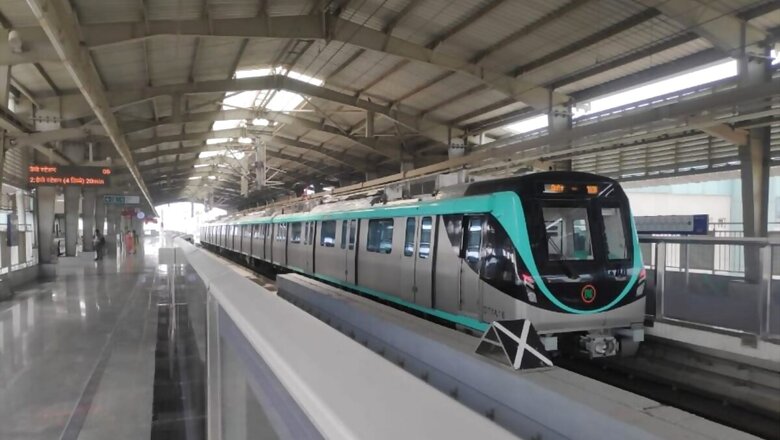
views
The DMRC on Tuesday said it has taken a major step towards development of an indigenously-built signalling technology for metro trains in line with the government’s flagship ’Make in India’ initiative. As part of it, i-ATS, an important sub-system of the signalling system, was launched on Tuesday, it said.
”The Delhi Metro Rail Corporation on Engineers Day (September 15) today took a major step towards the development of an indigenously-built CBTC (Communication Based Train Control) based signalling technology for metro railway with the launch of the i-ATS, which is an important sub-system of the signalling system,” the DMRC said in a statement. ATS (Automatic Train Supervision) is a computer based system, which manages train operations. This system is indispensable for high density operations such as the metro, where services are scheduled every few minutes, it said.
i-ATS is the indigenously developed technology, which will significantly reduce the dependence of Indian metros on foreign vendors dealing with such technologies, officials said. This prototype system as well as a state-of-the-art laboratory for further developing other sub- systems of the CBTC technology was inaugurated at Shastri Park by Durga Shanker Mishra, Secretary, Ministry of Housing and Urban Affairs (MoHUA) in the presence of DMRC’s Managing Director Mangu Singh, and other senior officials, it said.
”It is really a proud occasion to start something like this which is going to add to our strength on the Atmanirbhar Bharat initiative. The way we have promoted indigenization in the development of metros in the country, I am fully confident that this Indian system will also be sold outside and we will be the leaders in this area as well,” Mishra said. Singh termed this achievement as a ”major step” forward towards the development of indigenous technologies required for the operation of metro rail systems.
”This is a very important step towards the development of an indigenous CBTC system. I am sure that we will be able to work together and scale newer heights to completely indigenize metro railway construction as well as operations,” he said. Technology systems such as the CBTC are primarily controlled by the European countries and Japan. As part of the ’Make in India’ initiative of the government of India, the Ministry of Housing and Urban Affairs has decided to indigenize the CBTC technology, the statement said.
Along with DMRC, Niti Aayog, MoHUA, Bharat Electronics Limited (BEL) and C-DAC are part of this development. DMRC has been nominated to lead this important ’Make in India’ initiative, the statement said. To take the project forward, DMRC and BEL entered into a MoU for development of this indigenous ATS system. A dedicated team of DMRC and BEL, Ghaziabad worked together round the clock to take this important step towards ’Atmanirbhar Bharat’, it added.
DMRC has decided to use indigenous ATS (i-ATS) while upgrading the ATS of line 1 (Red Line) i.e. from Rithala to Shaheed Sthal, Ghaziabad. The same shall also be used in Phase-IV, the DMRC said. Some of the important features of this technology are that it can work with Train Control and Signalling Systems of different suppliers; i-ATS can work with different levels of technology of Train control and Signalling Systems, it said.
Predictive maintenance module shall also be introduced in the Phase-IV corridors using the i-ATS system, the statement said. Another MoU was signed on the occasion with BEL for indigenous development of ”Rolling Stock Drivers Training System” for training driving and troubleshooting skills to train operators, it said.
”We are totally dependent on import for this. It will be a mock up of a train’s driving cab with a computer-based system at the back end, where different real life scenario will be created to train the operator on driving and troubleshooting skills,” the DMRC said. The training systems, popularly known as driving simulators, procured so far are rolling stock-specific. The indigenous system can be utilised for multiple stocks by selecting from among the options available in the database, it said.


















Comments
0 comment